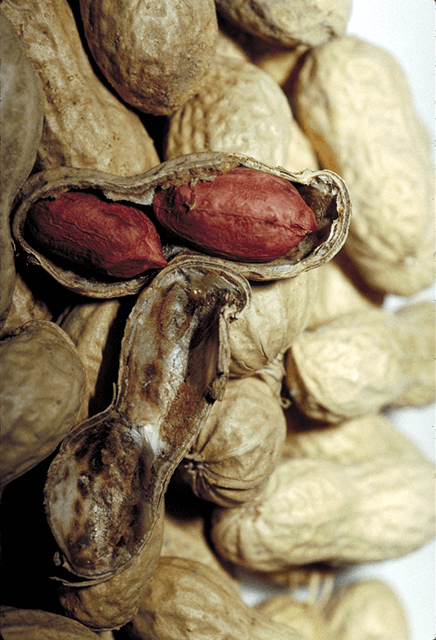Allergen Information Center
Comprehensive information about common allergens, their risk levels, and categories.
Food Allergies

Peanut
High Risk
One of the most common food allergens that can cause severe reactions such as anaphylaxis.
Common Symptoms
Anaphylaxis
Swelling
Vomiting

Tree Nuts
High Risk
Allergy to tree nuts like walnuts and almonds can be severe, causing hives, swelling, and even anaphylaxis.
Common Symptoms
Anaphylaxis
Swelling
Rash
Hives
Vomiting

Cow Milk
High Risk
A major food allergen that can cause symptoms like hives, respiratory issues, and is a leading cause of anaphylaxis.
Common Symptoms
Hives
Respiratory issues
Anaphylaxis

Egg
Medium Risk
Egg allergy can cause hives, digestive issues, and, in rare cases, anaphylaxis.
Common Symptoms
Hives
Digestive issues
Anaphylaxis

Wheat
Medium Risk
Can cause reactions like hives and respiratory symptoms; anaphylaxis is rare but possible.
Common Symptoms
Hives
Respiratory symptoms
Anaphylaxis

Soy
Medium Risk
Often causes mild to moderate symptoms such as skin irritation or digestive problems, but severe reactions can also occur.
Common Symptoms
Skin irritation
Digestive problems
Severe reactions

Sesame
High Risk
Sesame allergy can be severe, leading to multi-system reactions like anaphylaxis.
Common Symptoms
Severe reactions
Anaphylaxis

Fish
High Risk
Fish allergy (e.g., cod or salmon) is more common in adults and can range from mild hives to severe anaphylaxis.
Common Symptoms
Mild hives
Severe anaphylaxis

Shellfish (Shrimp)
High Risk
Shellfish allergies, including shrimp and crab, are common and potentially dangerous, leading to hives, itching, and anaphylaxis.
Common Symptoms
Hives
Itching
Anaphylaxis
Environmental Allergies

Pollen
Medium Risk
Causes hay fever (runny nose, sneezing, itchy eyes) and sometimes allergic asthma. Severe reactions are rare.
Common Symptoms
Runny nose
Sneezing
Itchy eyes
Allergic asthma

Dust Mites
Medium Risk
Triggers airway inflammation, sneezing, and runny nose; can cause or worsen asthma.
Common Symptoms
Airway inflammation
Sneezing
Runny nose
Asthma

Mold
Medium Risk
Mold spores in the air can cause nasal congestion, sneezing, coughing, and itchy eyes, sometimes triggering asthma attacks.
Common Symptoms
Nasal congestion
Sneezing
Coughing
Itchy eyes
Asthma attacks

Pet Dander
Medium Risk
Causes allergic rhinitis symptoms such as sneezing, runny nose, and itchy eyes. In some cases, it can trigger allergic asthma.
Common Symptoms
Sneezing
Runny nose
Itchy eyes
Coughing
Wheezing
Shortness of breath
Insects Allergies

Cockroach
Medium Risk
Proteins in cockroach droppings and bodies can trigger sneezing, coughing, and asthma attacks.
Common Symptoms
Sneezing
Coughing
Asthma attacks
Runny nose
Wheezing
Nasal congestion

Bee Sting
High Risk
Bee venom can cause rapid and severe reactions; in allergic individuals, it may lead to anaphylaxis, which is life-threatening.
Common Symptoms
Pain at sting site
Redness
Swelling
Itching
Hives
Difficulty breathing
Anaphylaxis

Fire Ant
High Risk
Fire ant stings cause painful, burning sensations, followed by red bumps and pus-filled blisters. Severe allergic reactions, including anaphylaxis, may occur in sensitive individuals.
Common Symptoms
Painful burning at sting site
Red bumps
Pus-filled blisters
Hives
Anaphylaxis

Wasp Sting
High Risk
Wasp stings can be extremely painful and lead to swelling, redness, and allergic reactions. In some cases, severe anaphylaxis may develop, requiring immediate medical attention.
Common Symptoms
Pain at sting site
Redness
Swelling
Hives
Difficulty breathing
Anaphylaxis
Drug Allergies

Penicillin
High Risk
The most common drug allergy; reactions range from rashes and hives to life-threatening anaphylaxis.
Common Symptoms
Hives
Rash
Itching
Swelling of face or throat
Difficulty breathing
Anaphylaxis

Aspirin
Medium Risk
Can cause hives, runny nose, and asthma attacks; anaphylactic reactions have also been reported in some cases.
Common Symptoms
Hives
Runny nose
Asthma attacks
Wheezing
Shortness of breath
Anaphylaxis
Chemical Allergies

Latex
High Risk
Proteins in natural latex (found in gloves, balloons, etc.) can trigger hives, itching, and sometimes anaphylaxis.
Common Symptoms
Hives
Itching
Swelling
Redness
Difficulty breathing
Anaphylaxis

Nickel
Low Risk
Skin contact with nickel (e.g., in jewelry) usually causes contact dermatitis – itchy rashes at the point of contact.
Common Symptoms
Itchy rash
Redness
Swelling
Blisters at contact site
Plants Allergies

Poison Ivy
Medium Risk
The urushiol oil in poison ivy leaves causes severe contact dermatitis, with red, itchy rashes and blisters appearing 1–2 days after contact.
Common Symptoms
Red, itchy rash
Blisters
Swelling
Pain at contact site